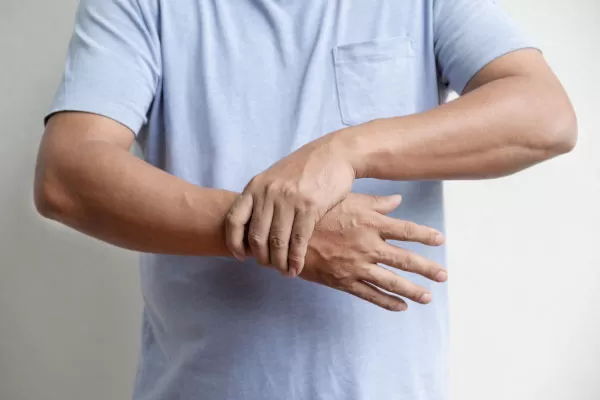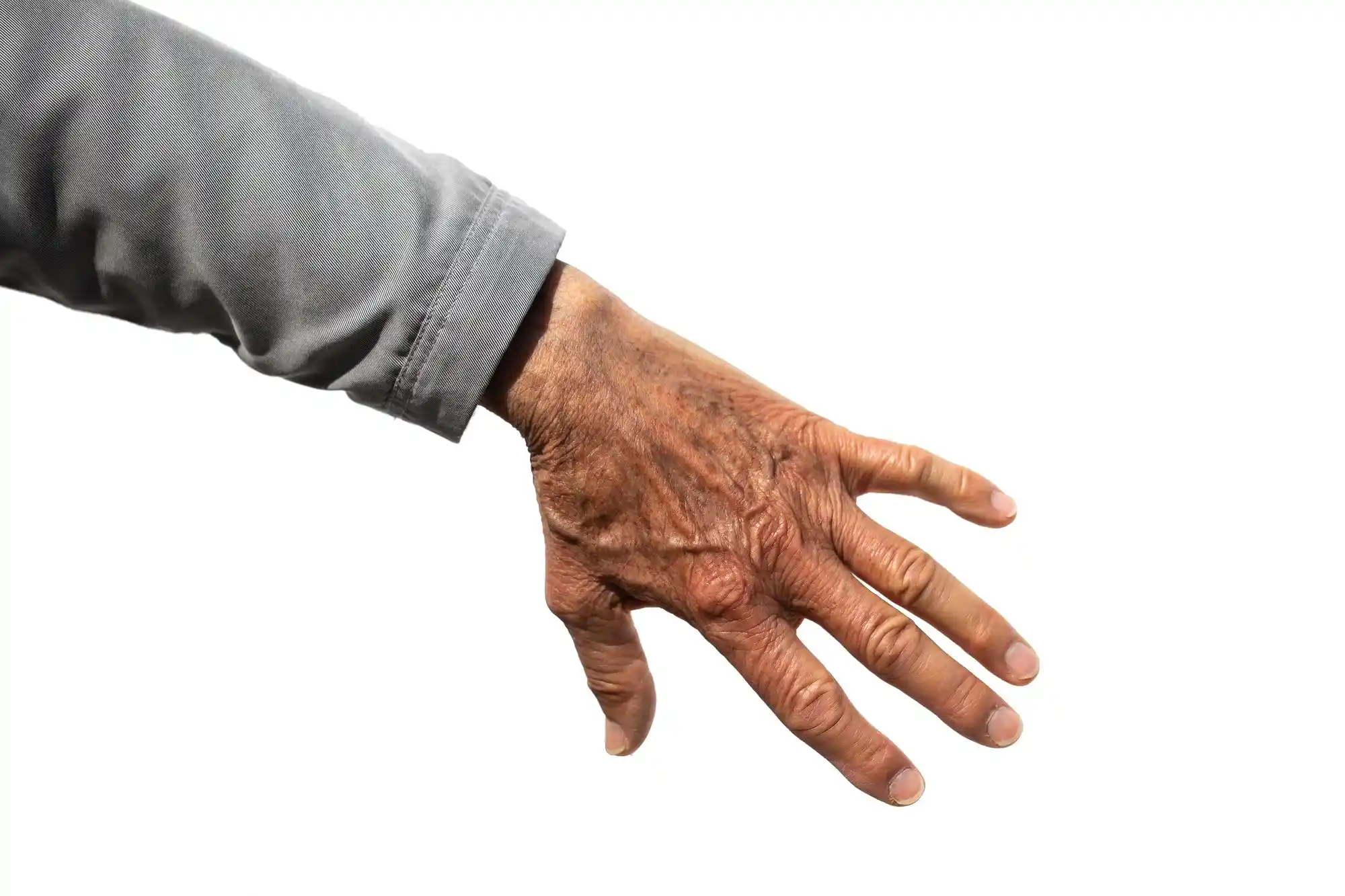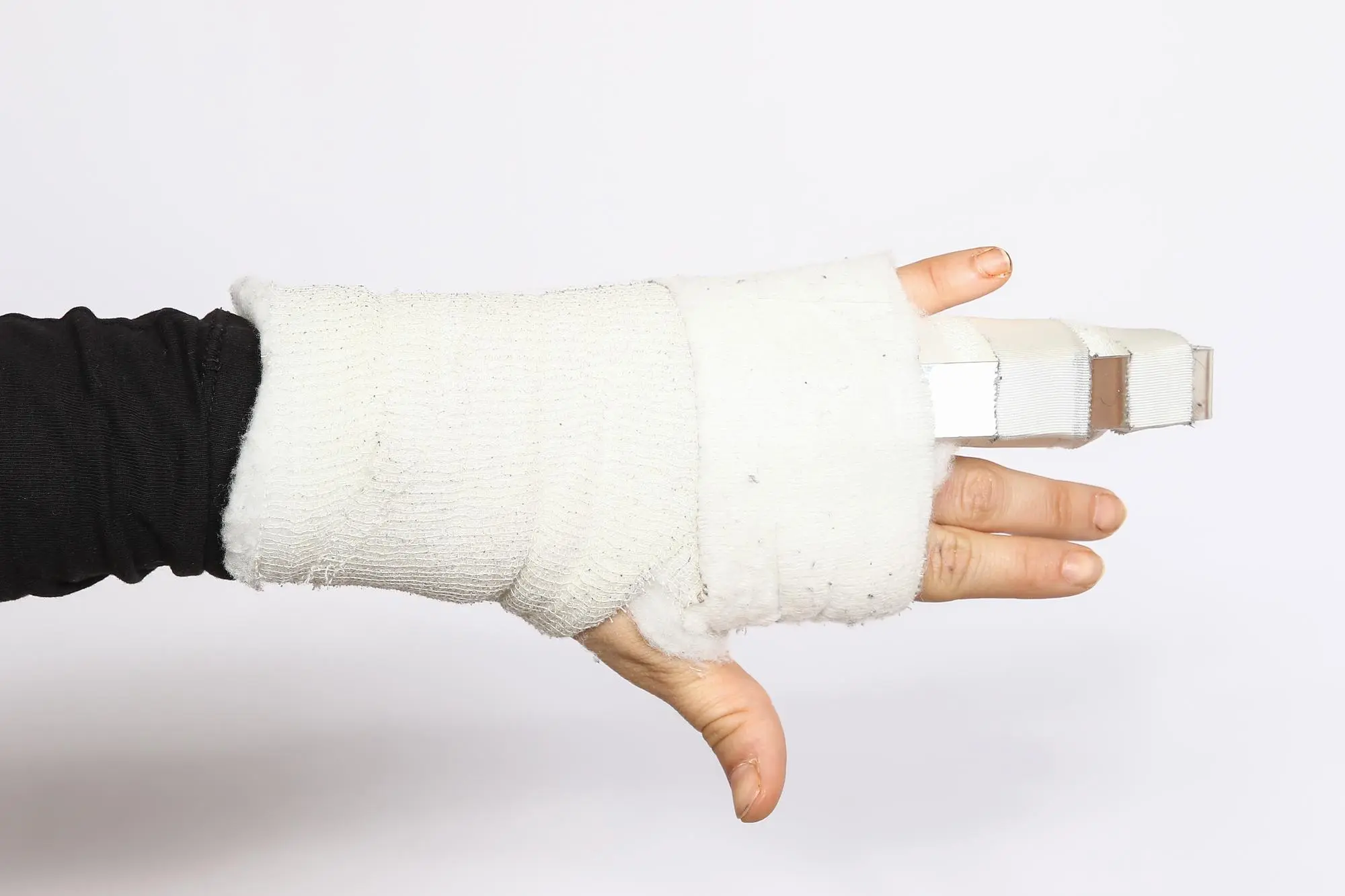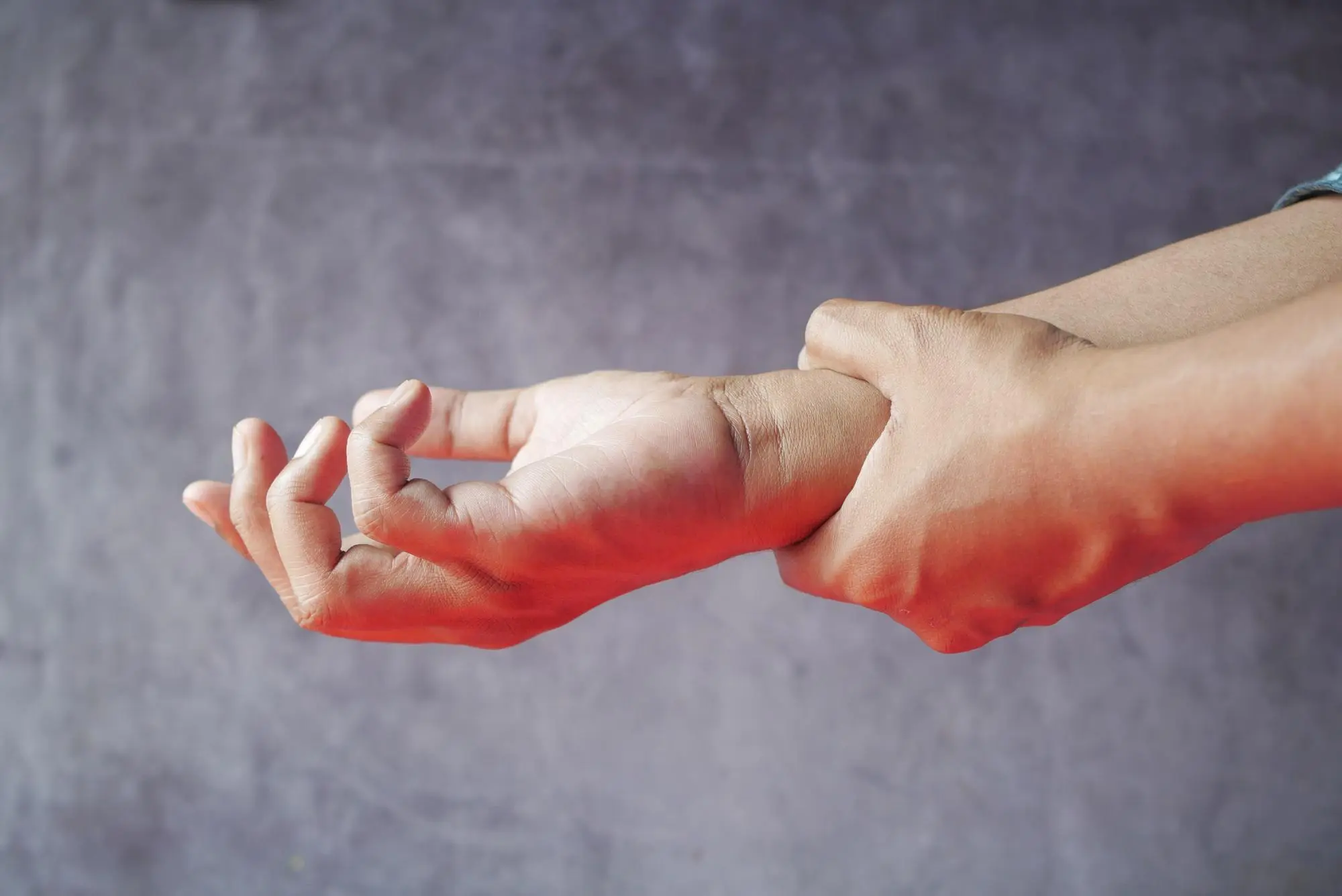Congenital Hand and Arm Deformities
Congenital hand deformities refer to structural abnormalities that are present at birth, affecting the shape, size, or function of the hand. These conditions can be caused by genetic factors or environmental influences during pregnancy.
Congenital arm deformities, that is, brachial palsy or congenital limb deficiencies, is defined as muscle weakness that develops in the arm, forearm and hand due to the stretching of the nerve structures that start from the neck region of the baby’s spinal cord and extend from the armpit to the hand during difficult birth processes. Congenital arm paralysis occurs in 1 or 4 out of 1000 new-born babies. Multiple pregnancy, the size of the baby, long and difficult birth are the conditions that increase the risk of congenital arm paralysis.
All kinds of deformities in the hands in the new-born baby and congenital hand difference may progress as the growth period starts. Children with congenital hand differences are likely to have difficulties in social life. The degree of congenital hand anomalies may range from a minor difference, such as unequal fingers, to a severe absence of a bone.
According to studies, babies may be born with a congenital difference of 1% or 2% in births and congenital differences are found in the hands at a rate of 10%.
You can call us today to receive effective treatment for your specific condition.
What Are the Different Types of Congenital Hand Deformities?
Congenital hand anomalies can range from minor abnormalities to severe malformations that can significantly impact a person’s ability to perform daily tasks. Here are some of the different types of hand deformities:
Problems in the Formation of Parts (Formation)
Congenital hand differences may occur because parts of the body stop developing while the baby is in the womb. This condition may also be seen as the complete absence or partial absence of a part of the body, such as the hand.
Radial Club Hand: It is a deformity involving all tissues of the forearm and the radial side of the hand (on the thumb side). The shortening of the bone may be seen as a pinkie finger or the absence of a finger. This difference may be observed in 6-month-old babies.
Ulnar Club Hand: It is a less common congenital difference than radial club hand. This different hand disease is seen when the bone (ulnar bone) on the pinkie finger side of the forearm is underdeveloped or if this bone is absent.
Non-Separation of Parts of the Hand (Difference Problem)
In such hand differences, the parts of the hand, bones or tissues are not separated from each other. One of the most common problems is attached finger, that is, syndactyly. Attached finger is when 2 or more fingers are attached together. There are 2 types of attached finger conditions:
Simple Syndactyly: It is the condition where only the tissues are attached.
Complex Syndactyly: There is a state attachment between the bones.
Duplication of Fingers
Duplication of fingers is defined as polydactyly. The finger most affected by this difference is the pinkie finger. It can be found on the thumb, on or middle of the pinkie finger.
Underdevelopment of the Fingers (Symbrachydactyly)
Underdeveloped fingers or thumbs are associated with many congenital hand anomalies. Theys may be smaller than normal fingers, and there may be developmental problems in the finger muscles. Bone development may be incomplete or no bone development.
Overdevelopment of the Fingers
Overdevelopment of the fingers is also known as macrodactyly. Overdevelopment of the fingers defines the cases where the fingers of the hand are too large or largely developed. It may also affect the hand and forearm. Early diagnosis and treatment of overdeveloped fingers is very important. Desired results can be achieved when treated early. However, in cases where it is not treated early or on time, it may lead to finger loss.
Causes of Congenital Hand Deformities
The causes of congenital deformities can be attributed to a combination of genetic and environmental factors.
Genetic Factors: Congenital hand anomalies can be caused by genetic factors that affect the development of the hand in the womb. These abnormalities can be inherited from one or both parents or can occur spontaneously.
Environmental Factors: Environmental factors during pregnancy can also contribute to congenital hand anomalies. These include exposure to certain drugs, chemicals, or infections, as well as poor nutrition or insufficient prenatal care.
Vascular Disruptions: Interruptions in the blood supply to the developing hand can cause deformities, such as constriction band syndrome and arterial thrombosis.
Teratogens: Teratogens are substances that can interfere with fetal development and cause birth defects. Certain drugs, such as thalidomide, have been associated with hand deformities.
What Are Symptoms of Congenital Hand Deformities?
The symptoms of congenital hand deformities can vary depending on the type and severity of the condition. Here are some of the common symptoms:
One of the most obvious signs of a congenital hand deformity is an abnormal hand shape. The hand may be smaller than usual or may have missing fingers or extra fingers.
In addition to abnormal hand shape, congenital hand anomalies can also result in limited movement in the hand or fingers. The affected hand may not be able to move as freely as the other hand, or certain fingers may not be able to move at all.
Some congenital hand deformities can also cause a weak grip, making it difficult to pick up objects or perform other tasks that require hand strength. Depending on the severity of the deformity, individuals may experience pain or discomfort in the affected hand or fingers. In some cases, congenital hand deformities can cause numbness or tingling in the hand or fingers.
If you or your child are experiencing any of these symptoms, you can contact us for a proper diagnosis and treatment plan.
How to Diagnose Congenital Hand Anomalies?
A proper diagnosis of congenital hand deformities is crucial for determining the best course of treatment, which may include hand surgery, physical therapy, or other interventions. Here are some of the ways to diagnose congenital hand anomalies:
Physical Examination: A doctor can diagnose congenital hand deformities by performing a physical examination of the affected hand. The doctor will look for any abnormalities in the shape, size, or function of the hand. Feel free to contact Dr. Burak for such examination.
Imaging Tests: Imaging tests such as X-rays, MRI or CT scans can be used to get a better view of the bones, joints, and soft tissues of the hand, and can help identify the extent of the deformity.
Genetic Testing: In some cases, congenital hand deformities may be caused by genetic abnormalities. Genetic testing can help identify any genetic mutations that may be causing the deformity.
Family History: A family history of congenital hand deformities can be an important factor in diagnosing the condition. If other family members have had similar hand abnormalities, it may suggest a genetic cause.
Recovery and Rehabilitation From Congenital Hand Anomalies Surgery
The recovery process can be challenging and requires a dedicated rehabilitation program.
Immediately following surgery, patients will typically have a splint on their hand to protect the surgical site. Pain medication may be prescribed to manage discomfort. The hand may also be elevated to reduce swelling.
During the first few weeks after hand surgery, patients are encouraged to keep their hand elevated and avoid any activities that could put stress on the surgical site. This may include activities such as typing or using hand tools. Physical therapy may also be prescribed to improve range of motion and strength in the affected hand.
As the hand heals, patients will gradually be able to resume normal activities. However, it is important to follow the rehabilitation program closely. The length of the recovery process will vary depending on the severity of the deformity and the extent of the surgery.
In addition to physical therapy, patients may also benefit from occupational therapy. This type of therapy focuses on improving fine motor skills and helping patients adapt to any changes in their hand function.
Congenital Hand Deformities FAQ
Are Hand and Arm Deformities Hereditary?
Congenital hand and arm paralysis can be hereditary, but not all cases are caused by genetics. Other factors, such as environmental influences or fetal development, can also play a role.
Can Congenital Hand Deformities Be Corrected Without Surgery?
Yes, they can. Treatment options for congenital hand anomalies vary depending on the specific condition and severity, but typically involve a combination of surgical and non-surgical approaches.
Non-surgical treatments may include hand therapy, orthotic devices, or specialized tools to assist with daily tasks. Surgery may be necessary to correct more severe deformities, such as syndactyly (fusion of fingers) or polydactyly (extra fingers), or to improve hand function and mobility.
What Is the Most Common Congenital Deformity of Hand?
The most common congenital deformity of the hand is syndactyly, a condition where fingers are fused together. It occurs in about 1 in 2,000 births.
How Long Does It Take to Recover From Congenital Hand Deformities Surgery?
The healing process begins where the nerve is repaired and progresses towards the fingertip by approximately 1 mm per day. Therefore, the healing process of congenital paralysis may continue from 6 months to 24 months.
However, in general the recovery time after surgery for congenital hand deformities varies depending on the type and severity of the condition, as well as the surgical technique used.
What Is the Success Rate of Surgery for Congenital Hand Deformities?
The success rate of surgery for congenital hand deformities depends on the type and severity of the condition, as well as the skill and experience of the surgeon. In general, surgical interventions for congenital hand deformities have a high success rate and can greatly improve hand function and appearance.
How Can I Find a Specialist Who Treats Congenital Hand Deformities?
You can find a specialist who treats congenital hand deformities by consulting with your primary care physician or pediatrician, or you can call us today to receive an effective treatment for your specific condition.











